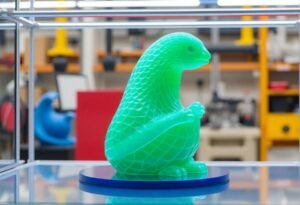Augmented Reality (AR) is redefining how we engage with navigation and mapping technologies. As we delve into this transformative innovation, it’s evident that AR enhances real-time spatial awareness, making navigation more intuitive and effective.
Revolutionizing Navigation with Augmented Reality
Augmented Reality is paving the way for a new era in navigation. By overlaying digital information onto the physical world, AR provides users with enriched context and precise directions. Users can interact with navigational cues through their smartphones or AR glasses, ensuring they stay on track. This immersive experience not only fosters better understanding of surroundings but also significantly improves safety, as fewer distractions lead to more focused navigation. For example, applications like Google Maps now feature AR directions that guide users step-by-step in urban environments, making it easier to navigate complex intersections and landmarks.
Enhancing Geographic Awareness Through AR Technology
With the integration of AR technology, geographic awareness is elevated to unprecedented levels. Users can visualize terrain features, such as hills and rivers, seamlessly blended with their real-world view. This heightened sense of spatial orientation assists in outdoor activities like hiking or biking, allowing individuals to plan routes effectively while minimizing risks. Moreover, AR can aid urban planning efforts by visualizing proposed developments within existing landscapes. This innovative approach encourages community engagement and informed decision-making regarding local infrastructure projects. By displaying potential changes in a tangible format, AR bridges the gap between conceptual designs and physical locations.
AR in Navigation Applications for Travel and Tourism
The travel and tourism industry has undergone a significant transformation thanks to AR. Tourists can navigate unfamiliar cities effortlessly with AR-powered apps that highlight attractions, dining, and local insights as they walk. Imagine strolling through historic areas while AR overlays details about monuments and hotspots, enriching the travel experience. Such applications not only facilitate easier navigation but also empower users with cultural understanding and context, promoting respectful engagement with local environments. AR-powered travel guides enhance convenience, allowing tourists to access information without reliance on printed materials or the internet, thus addressing connectivity challenges.
The Future of Mapping Solutions with AR Integration
The mapping landscape is evolving with AR at its forefront. Future developments in AR technology are promising enhanced features, such as dynamic real-time mapping that adapts to changing traffic conditions or weather patterns. This evolution fosters a highly personalized navigation experience tailored to individual preferences and needs. Furthermore, AR technologies are being trialed for autonomous vehicle navigation systems, where situational awareness and interaction with road environments are crucial. By facilitating deeper integration of AR into mapping solutions, transport authorities and developers ensure a smoother transition towards smarter cities and safer roads.
Innovative Collaborations Between AR and Automotive Industries
The synergy between AR and the automotive industry is truly groundbreaking. Major automotive manufacturers are exploring how AR can revolutionize in-car navigation experiences. By projecting navigation information directly onto the windshield, drivers can receive real-time updates without taking their eyes off the road. This advancement minimizes potential distractions, thereby enhancing safety during commutes. Additionally, AR technology in vehicles can assist with parking, providing a clear view of obstacles and guiding drivers to their destinations with accuracy. As these collaborations become more mainstream, we can expect safer driving experiences driven by cutting-edge technology.
Challenges and Opportunities in AR Navigation Technology
While the prospects of AR in navigation are exciting, challenges still exist. Issues such as device compatibility, AR content accuracy, and the need for substantial data processing power can hinder immediate widespread adoption. Nonetheless, opportunities loom large. The fusion of AR with AI can deliver personalized navigation that learns user habits and patterns, evolving optimally over time. As developers work on refining these technologies, broader acceptance and implementation of AR in navigation are anticipated. By overcoming existing hurdles, AR can solidify its role as a critical tool in the future of navigation.
Disclaimer: This article is intended for informational purposes only and does not constitute professional advice.





















